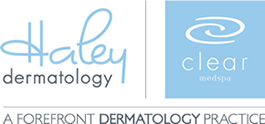 A lot of people believe indoor tanning is safe. The truth is, tanning beds injure thousands of people each year badly enough to go to a hospital, and that’s just the beginning. People who indoor tan damage their skin, causing wrinkles,
A lot of people believe indoor tanning is safe. The truth is, tanning beds injure thousands of people each year badly enough to go to a hospital, and that’s just the beginning. People who indoor tan damage their skin, causing wrinkles, warts, rashes, and dark spots. They may even get skin infections, cataracts in their eyes, and skin cancer, including deadly melanoma. The World Health Organization’s International Agency for Research on Cancer (IARC) classifies tanning beds and tanning lamps into its highest cancer risk category, carcinogenic to humans, the same category as other hazardous substances such as plutonium and certain types of radium.
warts, rashes, and dark spots. They may even get skin infections, cataracts in their eyes, and skin cancer, including deadly melanoma. The World Health Organization’s International Agency for Research on Cancer (IARC) classifies tanning beds and tanning lamps into its highest cancer risk category, carcinogenic to humans, the same category as other hazardous substances such as plutonium and certain types of radium.
There is a common misconception that a tan acts as the body’s natural protection against sunburn. A tan is the skin’s reaction to exposure to UV rays, the skin acts in self-defense by producing more melanin, a pigment that darkens the skin. Over time, this damage will lead to prematurely aged skin and, in some cases, skin cancer.Two types of UV radiation that penetrate the skin are UVB and UVA rays. UVB rays penetrate the top layers of skin and are most responsible for sunburns. UVA rays penetrate to the deeper layers of the skin. Both UVB and UVA rays damage the skin and can lead to melanoma (the deadliest type of skin cancer), basal cell carcinoma, and squamous cell carcinoma.
 You may have heard that indoor tanning is the safer way to tan because you can control your level of exposure to UV rays, this is not true. Tanning salons use lamps that emit both UVA and UVB radiation. Indoor tanning is designed to give you high levels of UV radiation in a short time.
You may have heard that indoor tanning is the safer way to tan because you can control your level of exposure to UV rays, this is not true. Tanning salons use lamps that emit both UVA and UVB radiation. Indoor tanning is designed to give you high levels of UV radiation in a short time.
Melanoma is the most common form of cancer for young adults 25-29 years old and the second most common form of cancer for young people 15-29 years old. Melanoma is the leading cause of cancer death in women 25-30 years old and the second leading cause of cancer death in women 30-35 years old.
Many people desire a tan to make them more attractive, however tanning is what leads to premature  aging. One of the chronic effects resulting from repeated exposure to UV radiation is premature aging of the skin, which encompasses a number of clinical signs that reflect structural changes in the dermis. These clinical signs include dryness, wrinkles, sagging, loss of elasticity, and skin discoloration. These signs are the result of degenerative changes in elastin and collagen.
aging. One of the chronic effects resulting from repeated exposure to UV radiation is premature aging of the skin, which encompasses a number of clinical signs that reflect structural changes in the dermis. These clinical signs include dryness, wrinkles, sagging, loss of elasticity, and skin discoloration. These signs are the result of degenerative changes in elastin and collagen.
Skin cancer is the most common cancer in the United States, and unlike almost all other kinds of cancer, the rates are climbing. This is definitely not a trend you want to follow. Avoiding indoor tanning and protecting yourself from the sun when outdoors are the best ways to reduce your chance of getting skin cancer and premature aging.
Here is a brief story on an actual Melanoma patient:
Brittany Lietz Cicala of Chesapeake Beach, Md., began tanning indoors at age 17. She stopped at age 20 when she was diagnosed with melanoma, the deadliest form of skin cancer. The former Miss Maryland says she used tanning beds at least four times a week, and sometimes every day.
“Growing up, until I started using tanning beds, my parents were very strict about me wearing sunscreen,” says Cicala. Although she also tanned in the summer sun during her 3 years of tanning bed use, Cicala estimates that 90 percent of her UV exposure was in tanning beds during this period.
In the 4 years since she was diagnosed with melanoma, Cicala’s surgeries have left her with about 25 scars. Cicala gets a head-to-toe skin exam every 3 months, which usually results in removal of a suspicious growth.
It is never too late to begin protecting your skin! Make an appointment today for your skin exam and learn more about ways to protect yourself and your family.
